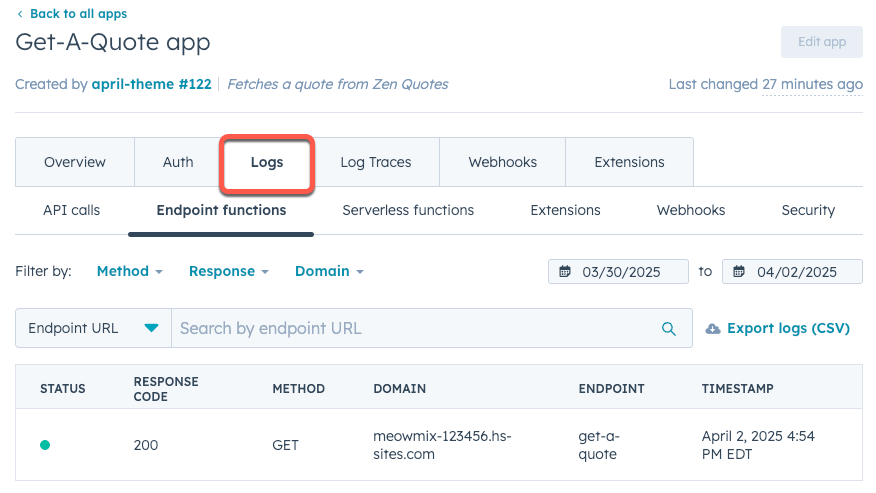Last modified: August 22, 2025
When you need to fetch data in your React modules, you can use a variety of methods on both the server- and client-side, depending on your use case. This includes:
- GraphQL (Professional and Enterprise only)
- HubL
getServerSidePropsfunction (Professional and Enterprise only)
Please note: the methods described in this guide are only for reading data. At this time, there are no methods for updating HubSpot data through React modules.
Server-side fetching
The sections below detail the methods available for fetching data on the server-side.GraphQL
If you have a Professional or Enterprise subscription, you can bind GraphQL queries to your modules to fetch data from HubDB, CRM objects (including custom objects), blogs, and knowledge base. You can explore your account’s schema and run test queries by using the GraphiQL tool in your account. Using GraphQL comes with some key advantages, such as:- Co-locating the query and component for compartmentalization.
- Needing only a single query for fetching association data.
- Triggering prerendering of pages using the query when you make updates to the query or relevant data.
hublParameters
You can pass data from the template to the module by using HubL at the template level, then usingprops.hublParameters at the React component level.
In the template, add parameters for each data property in the HubL module tag, then use HubL tokens to fetch the data.
props.hublParameters to pass the data to the React module.
hublDataTemplate API instead.
hublDataTemplate
To automatically attach and pass HubL context variables to your React modules:- In the module, export a string via
hublDataTemplate. In the string, include a HubL statement to set thehublDatavariable.
- The data will come through in your React module as a top level prop of
hublData. Useprops.hublDatato access the returned data.
getServerSideProps
If you have a Professional or Enterprise account, you can export agetServerSideProps function from React modules. This function must return an object with a serverSideProps property and a cacheConfig property, which configures caching of the module.
In the React component, the information returned in serverSideProps can be accessed via props.serverSideProps. For fetching specific data based on dependencies such as URLs, query parameters, or the contact object, HubSpot provides the following utility functions:
These helper functions wrap your data fetching functions and automatically inject relevant dependencies (with TypeScript types), ensuring that your module has the necessary context to fetch and process the data.
For example, when you use withUrlPath, the wrapped function will receive a URL without query parameters, making it easy to fetch data based on the path alone. Similarly, withContact ensures that your function has access to the URL, query, and contact information, allowing for more complex data-fetching scenarios.
withModuleProps
Wraps a function to provide module properties without additional dependencies. Access tofieldValues, hublData, and dataQueryResult etc. is available.
withUrlPath
Provides module properties likewithModuleProps, but also includes the page URL (without query parameters). Caching at the module level is partly based on the props and dependencies used in data fetching. By omitting the query parameters, you can optimize this caching, as it won’t create new cache records for every query parameter variation.
To include query parameters, use withUrlAndQuery instead.
withUrlAndQuery
Builds onwithUrlPath and provides module properties like withModuleProps, but also includes the page URL with query parameters. A new cache record will be created for each permutation of the URL with query parameters for this module.
withContact
LikewithUrlAndQuery, this function provides the module properties, along with a URL with query parameters, but also includes a contact object.
getServerSideProps caching
The caching that happens between HubSpot’s edge CDN and the data center where React modules are rendered is outside of the standard prerendering caching behavior. This means that parts of the page outside of the React module can be statically prerendered, and the module itself can be dynamic or cache by caching rules that you define. By default, HubSpot provides a 10-second cache (Cache-control: max-age=10) for data fetching modules.
Cache keys are based on the following:
- Project build number
- Module props (e.g.,
fieldValues,hublData,dataQueryResult) - Injected dependency values (e.g., using
withUrlPathwill result in a new cache key being created each time the module is rendered on a page at a new URL path).
getServerSideProps function includes a caching property which you can use to control caching. This property only contains the cacheControl property, which represents the Cache-Control header, and it can include any of the standard directives.
In the example below, the module will be cached for 60 seconds, and any request after that will trigger a re-cache.
In local development, the module is rendered on your machine, so no caching is at play.
Client-side fetching with serverless functions
Use serverless functions to fetch data on the client-side securely without needing to spin up and maintain a back-end server. There are multiple ways to authenticate serverless function requests if needed, either by using private app access tokens or secrets. Serverless functions for the CMS are executed when their public endpoint is called. The URL is determined by theserverless.json configuration, but always follows a common structure: https://<domain>/hs/serverless/<path>.
The above path is used for calling serverless functions built with projects, which is the recommended method. You can invoke serverless functions built with the design manager in CMS React modules with:
https://<domain>/_hcms/api/<path>.